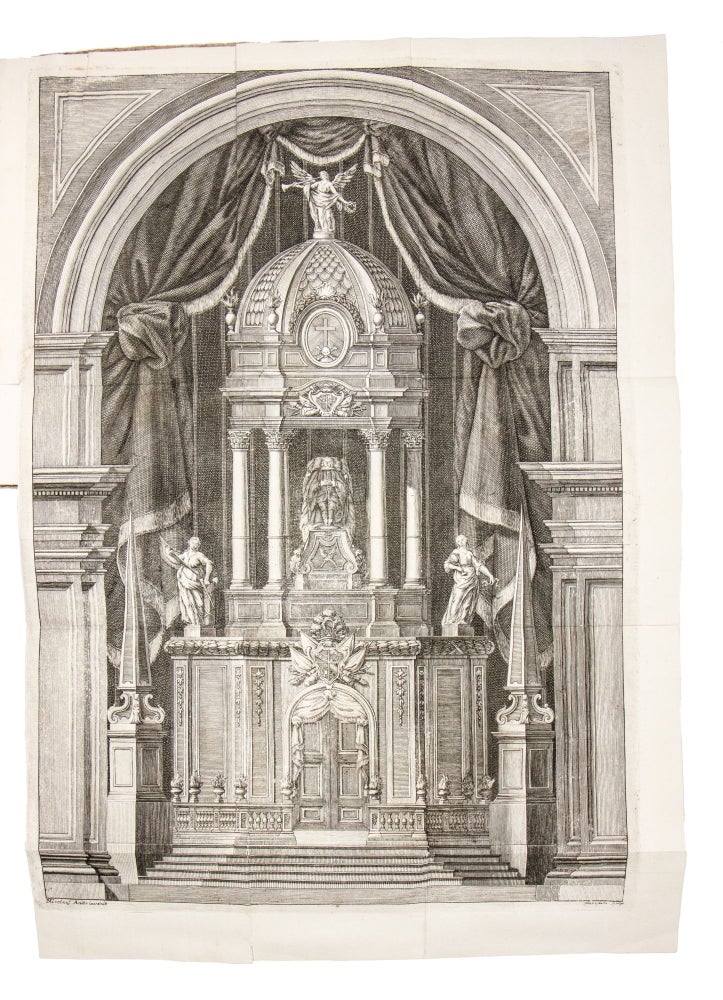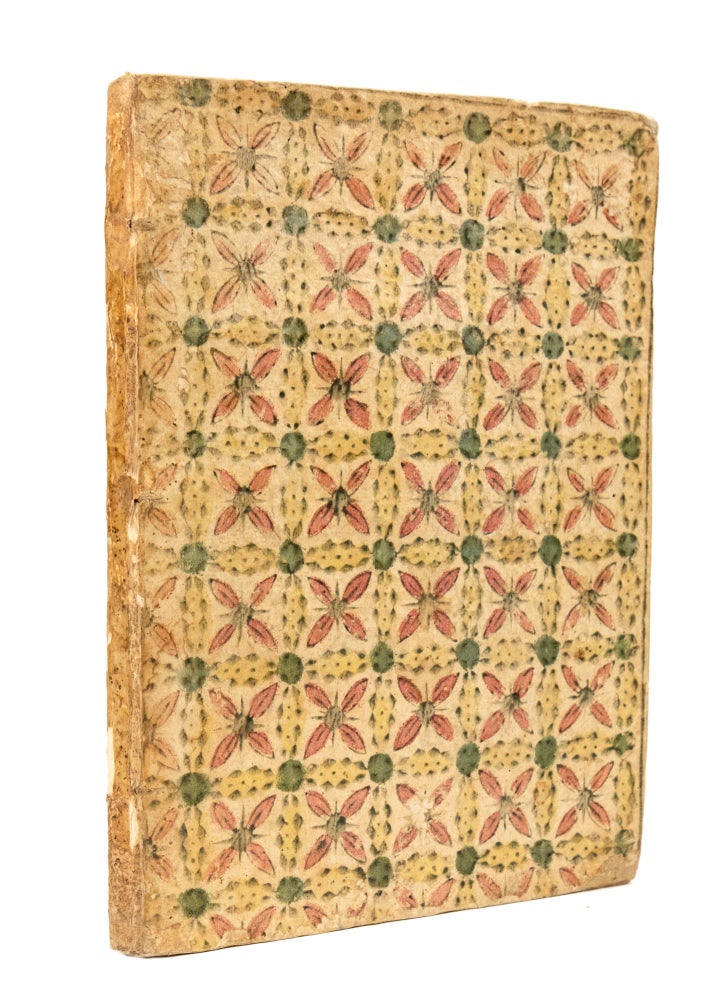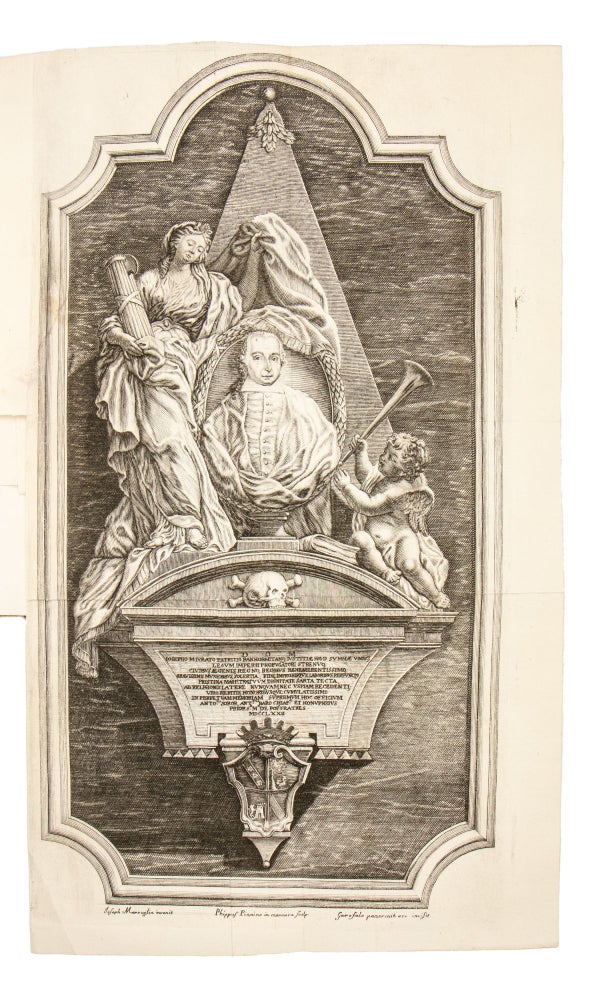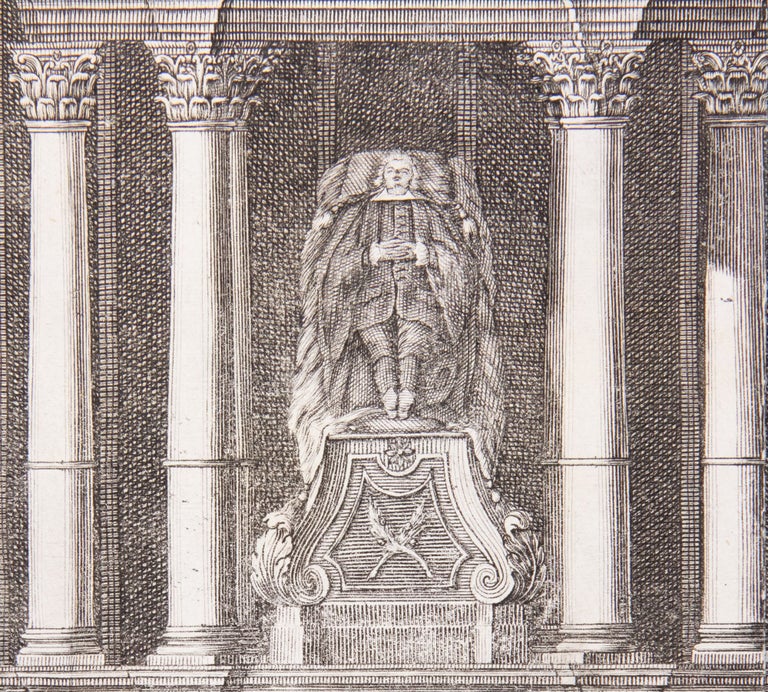Orazione ne' funerali di d. Giuseppe Maria Jurato avvocato fiscale della Regia Gran Corte del Regno di Sicilia nella chiesa di S. Ninfa.
Palermo: nella stamperia di Francesco Valenza, 1774.
Price: $2,600.00
Quarto: 25.7 x 19.5 cm. Engraved portrait, [2] lvs, III-XLIII p., 2 folding plates.
SOLE EDITION.
Bound in attractive contemporary patterned pasteboards (corners bumped, minor wear.) The text is in excellent condition. The two folding engravings show the funeral monument and the catafalque. Clean tear (mended, no loss) to first plate. Marginal tear, not affecting image to second plate. The portrait was etched by Giuseppe Garofalo after a drawing by Pietro Giaconia. The 2 foldings plates (see below) were also etched by Garofalo.
An unusual funeral book of the late Sicilian Baroque, commemorating funeral rites for the prosperous Sicilian lawyer Giuseppe Maria Jurato (d. 10 October 1712), judge of the Grand Civil Court of Palermo and Prosecutor of the Royal Court. Jurato’s funeral was held in the Baroque-Mannerist Chiesa di Santa Ninfa dei Crociferi, where he was also entombed.
Jurato’s desire to have a funeral monument erected to his memory in the church of Santa Ninfa is in keeping with his use of architecture to make public statements about his success and prosperity. Around 1760, Jurato built a palazzo on Via Maqueda only 80 meters from the church in which he is now buried. Now known as Palazzo Jurato-Rudinì, it is one of four that delimit the Baroque piazza known as Quattro Canti. With his Palazzo at one end of the street and his funeral monument at the other, the two "monuments" implied a kind of extended tribute to Jurato's life and achievements.
The book contains the text of the funeral oration as well as a brief description of the funeral ceremony. The two large folding plates show the grand catafalque (with Jurato’s body lying in repose upon it) designed by the architect and engineer Nicolò Anito (1715-1809); and the funeral monument, erected in the Church of Santa Ninfa, designed by the prolific Palermo-born architect Giuseppe Venanzio Marvuglia (1729-1814) and sculpted in marble by another Panormito, Filippo Pennino (1755-1801).
Jurato was proud to have attained his position of prominence by his own efforts (rather than through hereditary wealth). When his palazzo was finished, Jurato had the Latin inscription "remis et non velis" ("with oars and not with sails") posted over the entrance to mock his aristocratic neighbors. The inscription is a clear allusion to the fact that, unlike the nobles, he was able to achieve great things without the wind of illustrious forebears at his back. (This same theme is underscored in the funeral sermon.)
Although the Church of Santa Ninfa was begun in 1601, the façade was built by Giuseppe Venanzio Marvuglia and Ferdinando Lombardo between 1750 and 1760, making it and Jurato’s palazzo contemporary constructions. With his palazzo and tomb at either end of Via Maqueda -one of the two streets that make up Palermo’s main axis- Jurato continues to visually tout his achievements.






